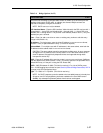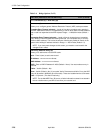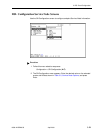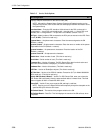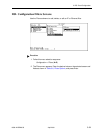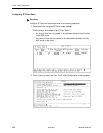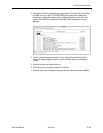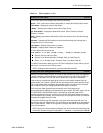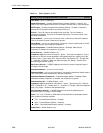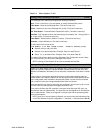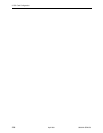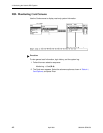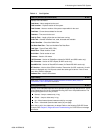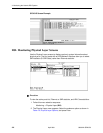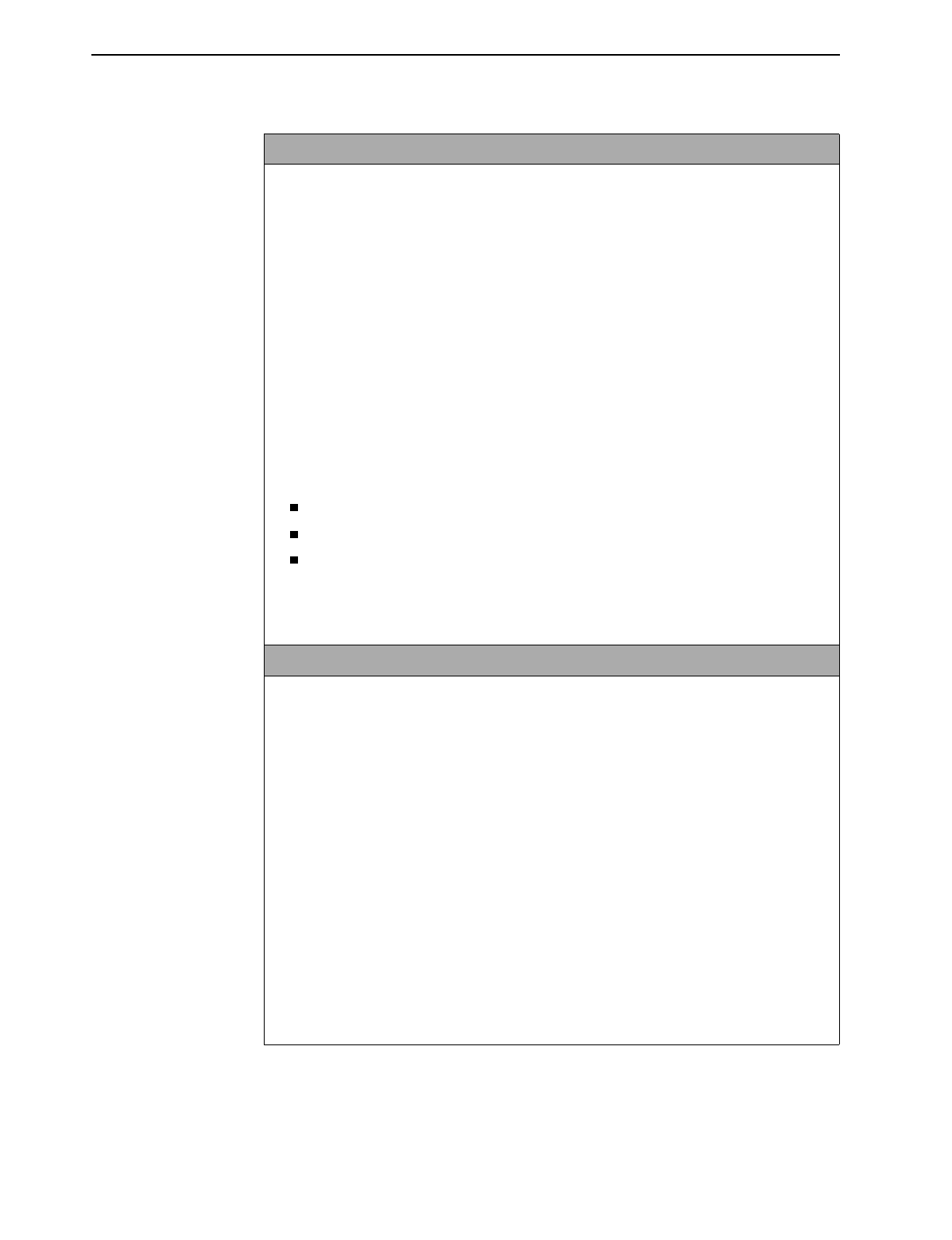
3. DSL Card Configuration
8000-A2-GB26-50 April 2001
3-35
Table 3-6. Filters Options (1 of 3)
IP Filters (IP Filter Table) (A-G-A)
The IP Filter Table screen displays the following information.
Item #
– Enter a value from 1filter8 to add, delete, or modify the individual filter entries.
Filter Name
– Displays the name of the IP filter.
# Rules
– Displays the number of rules in the IP filter (0–33).
Def. Filter Action
– Displays the default filter action, either Forward or Discard
(Default = Forward).
VNID
– Displays the interface and VNID (for Ethernet cards) to which the filter belongs
(2–4000).
Interface
– Displays the DSL interface to which the filter belongs (for example, dsl1:1
through dsl12:1 for 12-port cards).
Filter Status
– Displays either Active or Inactive.
Direction
– Displays either Inbound or Outbound.
On the bottom of this screen at the
Item Number (0 to Add, Item# to Edit, -Item# to Delete)
prompt:
Select 0 (zero) to add a new filter.
Select # (
n
) to edit existing filters. Example: Enter 3 to add Filter #3.
Select –# (–
n
) to delete a filter. Example: Enter –6 to delete Filter #6.
The Add or Edit selection takes you to the IP FIlter Configuration screen. When you exit
that screen, you return to the IP Filters screen.
NOTE: Deleting the filter deletes all rules associated with that filter.
IP Filter (Filter Rule Configuration screen) (A-G-A)
Allows you to build multiple rules for an IP filter. A filter consists of a set of rules applied to
a specific interface to indicate whether a packet received or sent out of that interface is
forwarded or discarded. You can add, edit, or delete filter rules within a named set.
A filter works by successively applying the rules to the information obtained from the
packet header until a match is found. The filter then performs the action specified by the
rule on that packet, which forwards or discards the packet. If all the rules are searched
and no match is found, the configured default filter action is executed.
Host rules have higher precedence than network rules. Rules apply to the
source/destination IP address, source/destination port number, and traffic types, such as
TCP/UDP/ICMP. TCP/UDP/ICMP traffic is forwarded to discarded based on the
conditions specified in the rule, including source and/or destination address and source
and/or destination port number. You can have up to 33 rules per filter. Each rule reduces
the packet throughput of the DSL card.
There can be 24 filters per DSL card with a maximum of two filters per DSL port, one
inbound filter and one outbound filter. The same filter can be applied as an inbound filter
and an outbound filter. Filters are configured on the port card and the processing takes
place on the endpoint.
NOTE: Once your rules have been configured, you can then bind and activate the filter
on the DSL interface using the
Configuration
→
Interfaces
→
General
screen (
A-C-A
).



